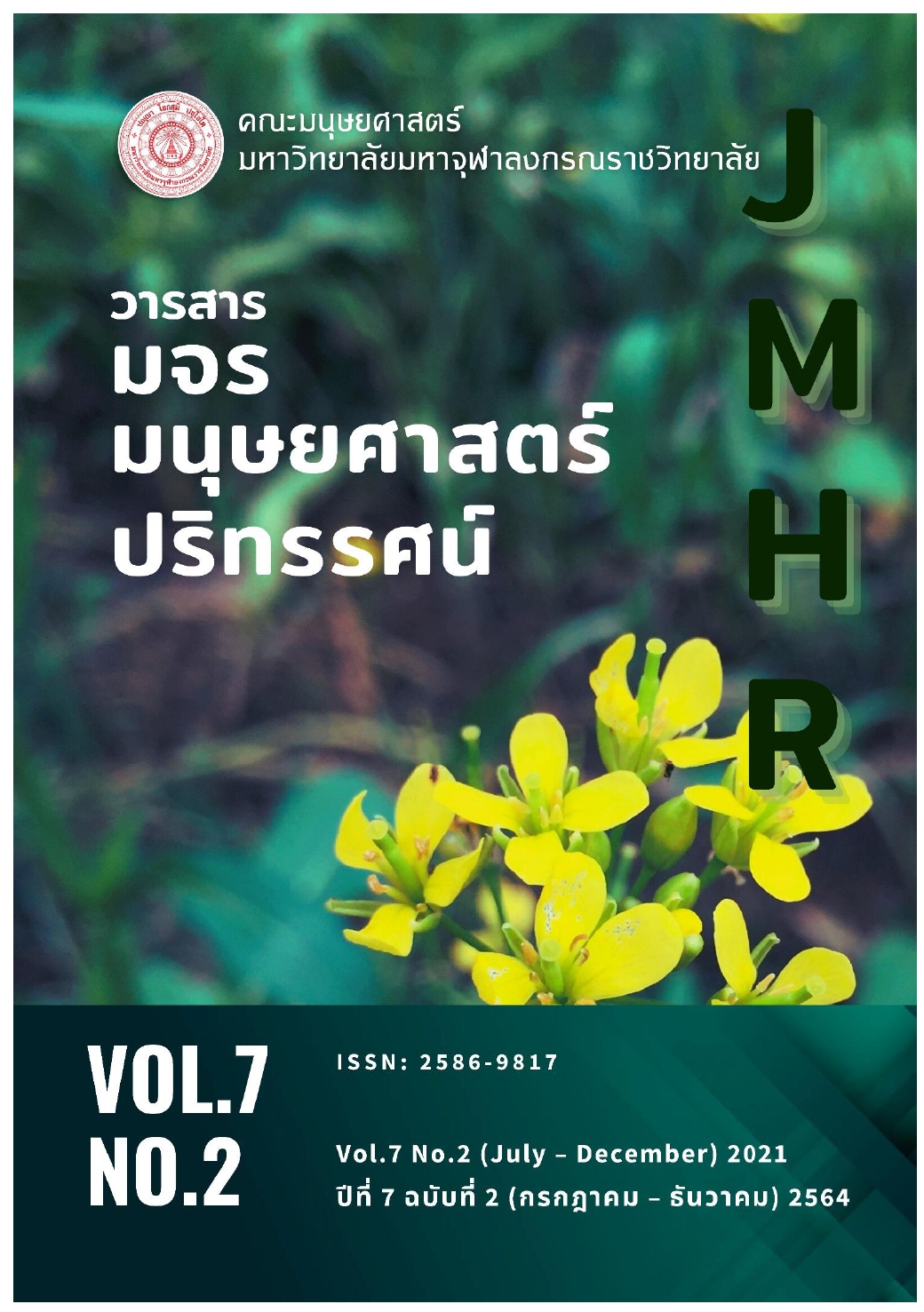ผลการใช้สถานการณ์จำลองทางนิติวิทยาศาสตร์ที่มีต่อความสามารถในการคิดอย่างมีวิจารณญาณของนักเรียนชั้นมัธยมศึกษาตอนต้น
คำสำคัญ:
การคิดอย่างมีวิจารณญาณ, สถานการณ์จำลอง, นิติวิทยาศาสตร์บทคัดย่อ
การวิจัยในครั้งนี้มีวัตถุประสงค์คือ 1. เพื่อศึกษาผลของการจัดกิจกรรมการเรียนรู้โดยใช้สถานการณ์จำลองทางนิติวิทยาศาสตร์ที่มีต่อการคิดอย่างมีวิจารณญาณของนักเรียน ชั้นมัธยมศึกษาตอนต้น โรงเรียนแม่ตืนวิทยา และ 2. เพื่อศึกษาผลของการจัดกิจกรรมการเรียนรู้โดยใช้สถานการณ์จำลองทางนิติวิทยาศาสตร์ที่มีต่อผลสัมฤทธิ์ทางการเรียนของนักเรียนชั้นมัธยมศึกษาตอนต้น โรงเรียนแม่ตืนวิทยา ประชากรในการวิจัย คือ นักเรียนชั้นมัธยมศึกษาปีที่ 2 โรงเรียนแม่ตืนวิทยา จังหวัดลำพูน ที่เลือกเรียนวิชาเพิ่มเติม รายวิชานิติวิทยาศาสตร์พื้นฐาน จำนวน 28 คน เครื่องมือที่ใช้ในการทดลอง คือ แผนการจัดการเรียนรู้โดยใช้สถานการณ์จำลองทางนิติวิทยาศาสตร์ จำนวน 2 แผน 18 ชั่วโมง แบบทดสอบการคิดอย่างมีวิจารณญาณ เรื่อง นิติวิทยาศาสตร์พื้นฐาน จำนวน 40 ข้อ และแบบทดสอบผลสัมฤทธิ์ทางการเรียน เรื่อง นิติวิทยาศาสตร์พื้นฐาน จำนวน 40 ข้อ วิเคราะห์ข้อมูลโดยคำนวณค่าเฉลี่ย () ร้อยละ(%) และส่วนเบี่ยงเบนมาตรฐาน () ผลการวิจัยสรุปได้ดังนี้
- จากการศึกษาผลของการจัดกิจกรรมการเรียนรู้โดยใช้สถานการณ์จำลองทางนิติวิทยาศาสตร์ที่มีต่อการคิดอย่างมีวิจารณญาณของนักเรียนชั้นมัธยมศึกษาชั้นปีที่ 2 พบว่า ความ สามารถในการคิดอย่างมีวิจารณญาณของนักเรียนหลังการสอนได้คะแนนเฉลี่ย เท่ากับ 27.32 คะแนน คิดเป็นร้อยละ 68.30 ส่วนเบี่ยงเบนมาตรฐานเท่ากับ 2.82 และความสามารถในการคิดอย่างมีวิจารณญาณของนักเรียนชั้นมัธยมศึกษาปีที่ 2 หลังการจัดกิจกรรมการเรียนรู้สูงกว่าก่อนการจัดกิจกรรมการเรียนรู้โดยใช้สถานการณ์จำลองทางนิติวิทยาศาสตร์มีความก้าวหน้าเฉลี่ย 10.07 คะแนน คิดเป็นร้อยละ 25.18
- จากการศึกษาผลของการจัดกิจกรรมการเรียนรู้โดยใช้สถานการณ์จำลองทางนิติวิทยาศาสตร์ที่มีต่อผลสัมฤทธิ์ทางการเรียนของนักเรียนชั้นมัธยมศึกษาชั้นปีที่ 2 พบว่า คะแนนผลสัมฤทธิ์ทางการเรียนหลังการสอนได้คะแนนเฉลี่ย 27.64 คะแนน คิดเป็นร้อยละ 69.11 ส่วนเบี่ยงเบนมาตรฐาน 2.19 และคะแนนผลสัมฤทธิ์ทางการเรียน ของนักเรียนชั้นมัธยมศึกษาปีที่ 2 หลังการจัดกิจกรรมการเรียนรู้สูงกว่าก่อนการจัดกิจกรรมการเรียนรู้โดยใช้สถานการณ์จำลองทางนิติวิทยาศาสตร์ มีความก้าวหน้าเฉลี่ย 8.79 คะแนน คิดเป็นร้อยละ 21.96
เอกสารอ้างอิง
กระทรวงศึกษาธิการ. (2542). พระราชบัญญัติการศึกษาแห่งชาติ พ.ศ. 2542. กรุงเทพฯ: พิมพ์อักษรไทย.
กระทรวงศึกษาธิการ. (2551). หลักสูตรการศึกษาขั้นพื้นฐาน พุทธศักราช 2551. กรุงเทพฯ: โรงพิมพ์ชุมนุมสหกรณ์การเกษตรแห่งประเทศไทย.
ขวัญ ตาใจ. (2554). ผลการจัดการเรียนรู้ด้วยสถานการณ์จำลองทางนิติวิทยาสาสตร์เพื่อพัฒนาการคิดวิเคราะห์ สำหรับนักเรียนชั้นมัธยมศึกษาปีที่ 6 (วิทยานิพนธ์ปริญญาการศึกษามหาบัณฑิต สาขาวิทยาศาสตร์ศึกษา). มหาวิทยาลัยนเรศวร. พิษณุโลก.
จารุวรรณ รัตนโภคา. (2544). การศึกษาเปรียบเทียบผลสัมฤทธิ์ทางการเรียน ความชอบจากการสอนด้วยวีดีทัศน์แบบสถานการณ์จำลองกับการสอนปกติ วิชาทฤษฎีงานถม-ลงยา (วิทยานิพนธ์ปริญญาครุศาสตร์อุตสาหกรรมมหาบัณฑิต สาขาเทคโนโลยีเทคนิคศึกษา). สถาบันเทคโนโลยีพระจอมเกล้าพระนครเหนือ. กรุงเทพฯ.
ทิศนา แขมณี. (2554). ศาสตร์การสอน (พิมพ์ครั้งที่ 14). กรุงเทพฯ: สำนักพิมพ์แห่งจุฬาลงกรณ์มหาวิทยาลัย.
ลักขณา สริวัฒน์. (2549). การคิด. กรุงเทพฯ: โอเดียนสโตร.
วิจารณ์ พานิช. (2555). วิถีสร้างการเรียนรู้เพื่อศิษย์ ในศวรรษที่ 21 (พิมพ์ครั้งที่ 1). กรุงเทพฯ: มูลนิธิสดศรี-สฤษดิ์วงศ์.
วิมลรัตน์ สุนทรโรจน์. (2544). การพัฒนาการเรียนการสอน. มหาสารคาม: มหาวิทยาลัยมหาสารคาม.
วุทธิศักดิ์ โภชนุกูล. (2552). ภาวะผู้นำทางการศึกษาในสังคมโลกาภิวัตน์. กรุงเทพฯ: คณะศึกษาศาสตร์ มหาวิทยาลัยสงขลานครินทร์.
สนั่น มาสกลาง. (2539). ผลสัมฤทธิ์ทางการเรียนและความคิดเห็นต่อการเรียนคณิตศาสตร์ของนักเรียนชั้นประถมศึกษาปีที่ 4 ที่เรียนด้วยวิธีการสอนโดยใช้ สถานการณ์จำลอง (วิทยานิพนธ์มหาบัณฑิต ศึกษาศาสตรมหาบัณฑิต). มหาวิทยาลัยเชียงใหม่. เชียงใหม่
สราวุธ เบญจกุล. (2550). หลักฐานทางนิติวิทยาศาสตร์กับกระบวนการยุติธรรม. วารสารศาลยุติธรรมปริทัศน์ (กันยายน 2550). 64-67.
สาวิตรี แย้มศรีบัว. (2540). ผลของการใช้สถานการณ์จำลองในการสอนภาคปฏิบัติการพยาบาลสุขภาพจิต และจิตเวชต่อความสามารถในการสร้างสัมพันธภาพ เพื่อการบำบัดของนักศึกษาพยาบาล (วิทยานิพนธ์ปริญญาพยาบาลศาสตรมหาบัณฑิต). จุฬาลงกรณ์มหาวิทยาลัย. กรุงเทพฯ.
สุพิน บุญชูวงศ์. (2544). หลักการสอน (พิมพ์ครั้งที่ 9). กรุงเทพฯ: สถาบันราชภัฏสวนดุสิต.
สุวิทย์ มูลคำ. (2547). ครบเครื่องเรื่องการคิด (พิมพ์ครั้งที่ 5). กรุงเทพฯ: ภาพการพิมพ์.
อรรถพล แช่มสุวรรณวงศ์ และคณะ.(2546). นิติวิทยาศาสตร์ 1 เพื่อการสืบสวนสอบสวน : การสืบสวนสอบสวน การตรวจสถานที่เกิดเหตุ การเก็บวัตถุพยาน การถ่ายภาพ (พิมพ์ครั้งที่ 4). กรุงเทพฯ: ทีซีจี พริ้นติ้ง.
อภิสิทธ์ ธงไชย และคณะ (2550). การจัดการเรียนการสอนนิติวิทยาศาสตร์ เรื่อง ลายนิ้วมือ.สืบค้น 20 ธันวาคม 2558 จาก http://penthai.sc.mahidol.ac.th/html/articles/forensic.pdf
อุษณีย์ โพธิสุข. (2537). วิธีสอนเด็กปัญญาเลิศ. กรุงเทพฯ : ภาควิชาการศึกษาพิเศษมหาวิทยาลัยศรีนครินทรวิโรฒ ประสานมิตร.
Ennis. R.H., Millman, J& Tomko, T.N.. (1985). Cornell Critical Thinking Tests.Pacific Grove. California: Midwest Publications.
Felder, R. and Brent, R. (1996). Navigating the Bumpy Road to Student-CenteredInstruction, Journal of College Teaching, 44, 43-47.
Myers, B. Charles., and Myers, K. Lynn. (1995). The Professional Education: A new introduction to theaching and School. California : Wadsworth.
Norris, S.P. & Ennis, R. (1989). Evaluating critical thinking. In R. J. Schwartz& D. N. Perkins (Eds), The practitioners’ guide to teaching thinking series. Pacific Grove, CA: Midwest Publications.
Northern Ireland Curriculum. (2007). Active Learning and Teaching Secondary Key Stage 3. Council for the Curriculum, Examinations and Assessment. Northern Ireland: A PMB Publication.






